Complete Solutions to Questions of chapter XII BOARDS of Class 12 book with complete answers and questions
| Class 12 | CHEMISTRY |
| Chapter | XII BOARDS |
| XII BOARDS PREVIOUS YEAR | Questions |
| Number Of Questions | 31 |
| Academic Year | 2023-24 |
Analyses shows that FeO has a non-stoichiometric composition with formula `Fe_(0.95)O_(1.00)`. Give reason.
View SolutionCO(g) and `H_(2)(g)` react to give different products in the presence of different catalysts. Which ability of the catalyst is shown by these reactions ?
View Solution(a) Write the co-ordination number and oxidation state of platinum in the complex `[Pt(en)_(2)Cl_(2)]`
(b) Low spin configuration are rarely observed in tetrahedral co-ordination entity formation . Explain .
View SolutionOut of chlorobenzene and benzyl chloride , which one gets easily hydrolysed by aqueous NaOH and why ?
View SolutionWrite the IUPAC name of the following :
`{:(" "CH_(3)), (" "|) , (CH_(3)-C-CH-CH_(3)), (" "| " "| ), (" "C_(2)H_(5) OH):}`
View SolutionCalculate the freezing point of a solution containing 60 g glucose (Molar mass = 180 g `mol^(-1)`) in 250 g of water . (`K_(f)` of water = `1.86 K kg mol^(-1)`)
View SolutionFor the reaction `2N_(2)O_(5)(g) to 4NO_(2) (g) + O_(2)(g)` , the rate of formation of `NO_(2)(g) ` is `2.8 xx 10^(-3) Ms^(-1)` . Calculate the rate of disapperance of `N_(2)O_(5)(g)`.
View SolutionAmoung the hydrides of Group - 15 elements , which have the :
(a) lowest boiling point ? `" "` (ii) maximum basic character ?
(iii) highest bond angle ? `" " ` (d) maximum reducing character ?
View SolutionHow do you convert the following ?
(a) Ethanal to Propanone `" "` (b) Toluene to Benzoic acid
View SolutionAccount for the following :
(a) Aromatic carboxylic acids do not undergo Friedel-Crafts reaction.
(b) `pK_(a)` value of 4-nitrobenzoic acid is lower than that of benzoic acid .
View SolutionComplete and balance the following chemical equations :
(a) `Fe^(2+) + MnO_(4)^(-) + H^(+) to " " ` (b) `MnO_(4)^(-) + H_(2)O + I^(-) to `
View SolutionGive reasons for the following :
(a) Measurement of osmotic pressure method is preferred for the determination of molar masses of macromolecules such as proteins and polymers .
(b) Aquatic animals are more comfortable in cold water than in warm water .
(c) Elevation of boiling point of `1M KCl` solution is nearly double than that of 1 M sugar solution.
View SolutionAn element 'X' (At. Mass = 40 g `mol^(-1)`) having f.c.c structure has unit cell edge length of 400 pm . Calculate the density of 'X' and the number of unit cells in 4 g of 'X' .
`(N_(A) = 6.022 xx 10^(23) mol^(-1))`.
View SolutionA first order reaction is 50% completed in 40 minutes at 300 K and in 20 minutes at 320 K.
Calculate the activation energy of the reaction . (Given : log 2 = `0.3010` , log 4 = `0.6021` , R = `8.314 J K^(-1) mol^(-1)`) .
View SolutionWhat happens when :
(a) freshly prepared precipitate of `Fe(OH)_(3)` is shaken with a small amount of `FeCl_(3)` solution
(a) persistent dialysis of a colloidal solution is carried out
(c ) an emulsion centrifuges ?
View SolutionWrite the chemical reaction involved in the extraction of gold by cyanide process. Also give the role of zinc in the extraction.
View SolutionGive reason for the folloiwng :
(a) `E_("value")^(@)` for `Mn^(3+)//Mn^(2+)` couple is much more positive than that of `Fe^(3+)//Fe^(2+)` couple.
(b) Iron has higher enthalpy of atomization then that of copper.
(c) `Sc^(3+)` is colourless in aqueous solution whereas `Ti^(3+)` is coloured.
View Solution(a) Identify the chiral molecule in the following pair :
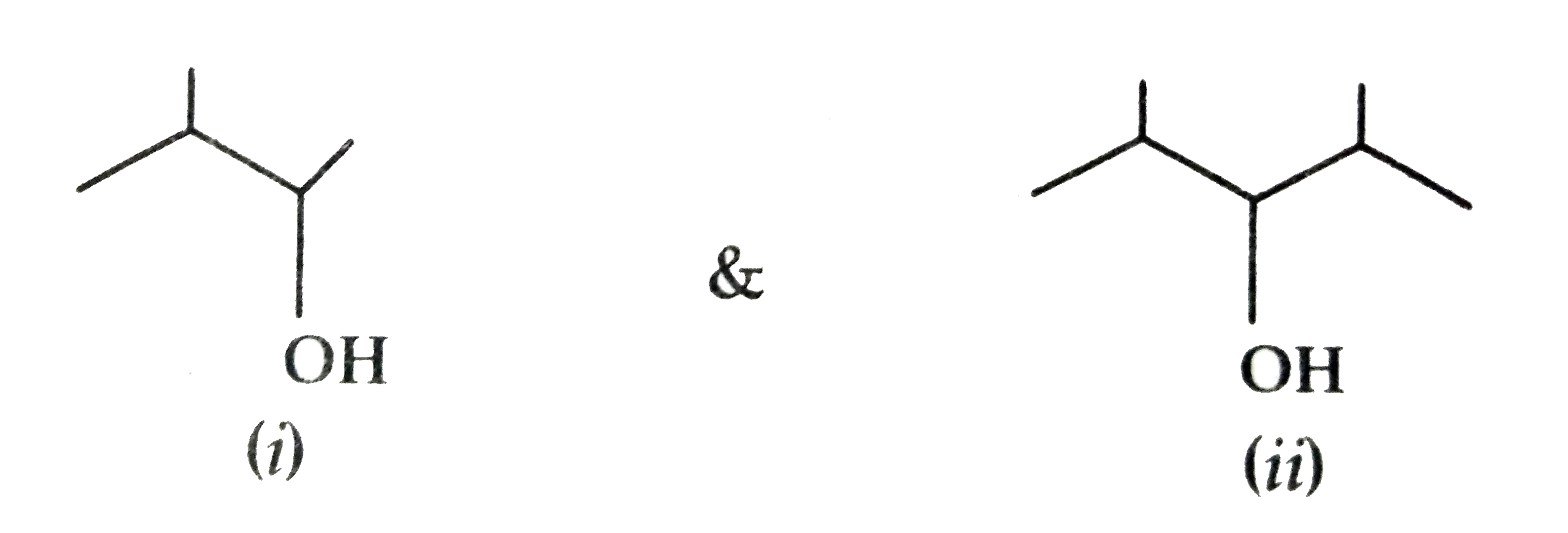
(b) Write the structure of the product when chlorobenzene is treated with methyl chloride in the presence of sodium metal and dry ether .
(c) Write the structure of the alkene formed by dehydrohalogenation of 1-bromo-1-methylcyclohexane with alcoholic KOH.
View Solution(A), (B) and (C ) are three non-cylic funtional isomers of a carbonyl compound with molecular formula `C_(4)H_(8)O`. Isomers (A) and (C ) give positive Tollen's test whereas isomer (B) does not give Tollens' test but gives positive iodoform test. Isomers (A) and (B) on reduction with `Zn(Mg)` | conc. HCl give the same product (D).
(a) Write the structures of (A), (B) ,(C) and (D).
(b) Out of (A), (B) and (C ) isomers, which one is least reactive towards addition of HCN ?
View SolutionWrite the structures of the main products in the following reactions :
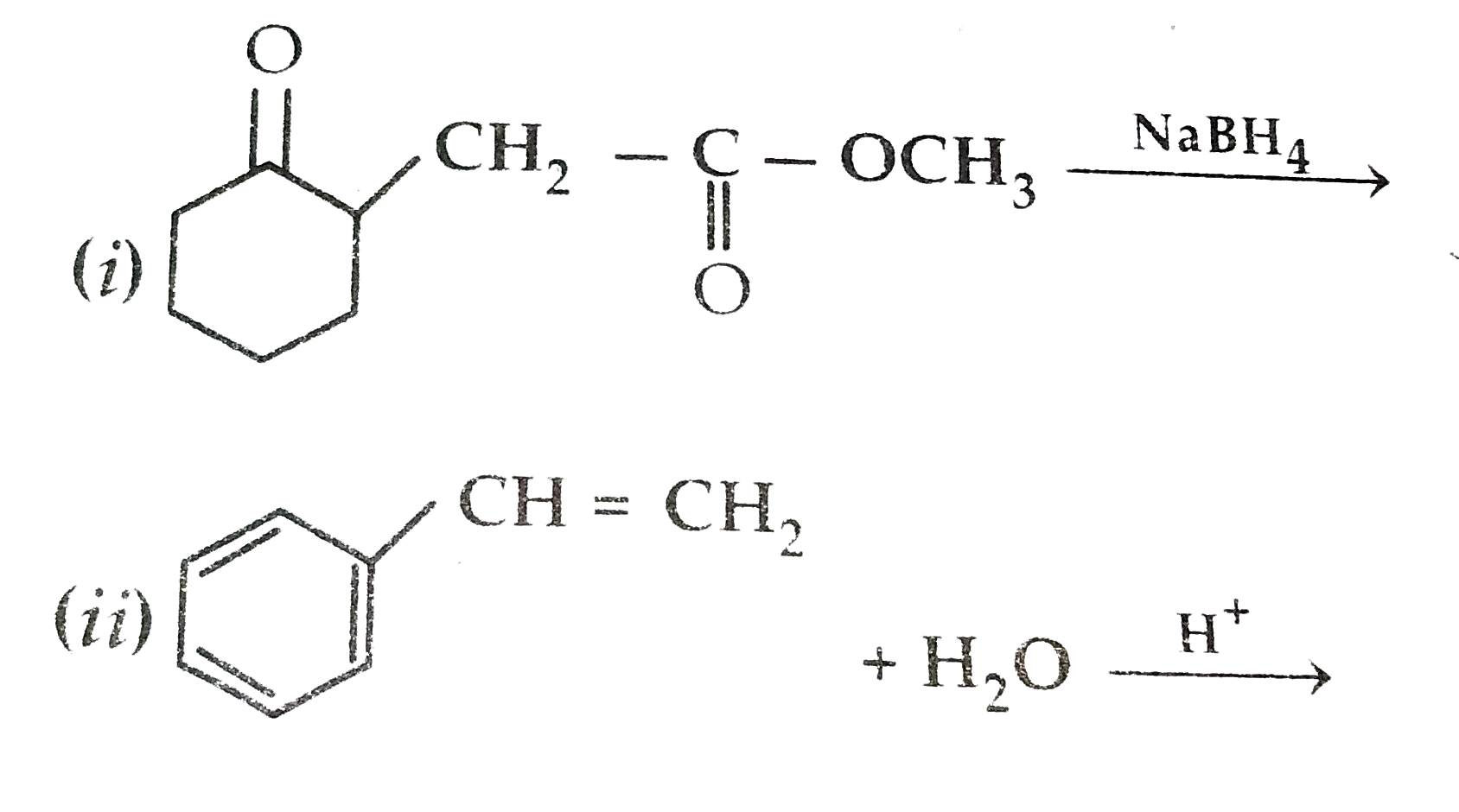
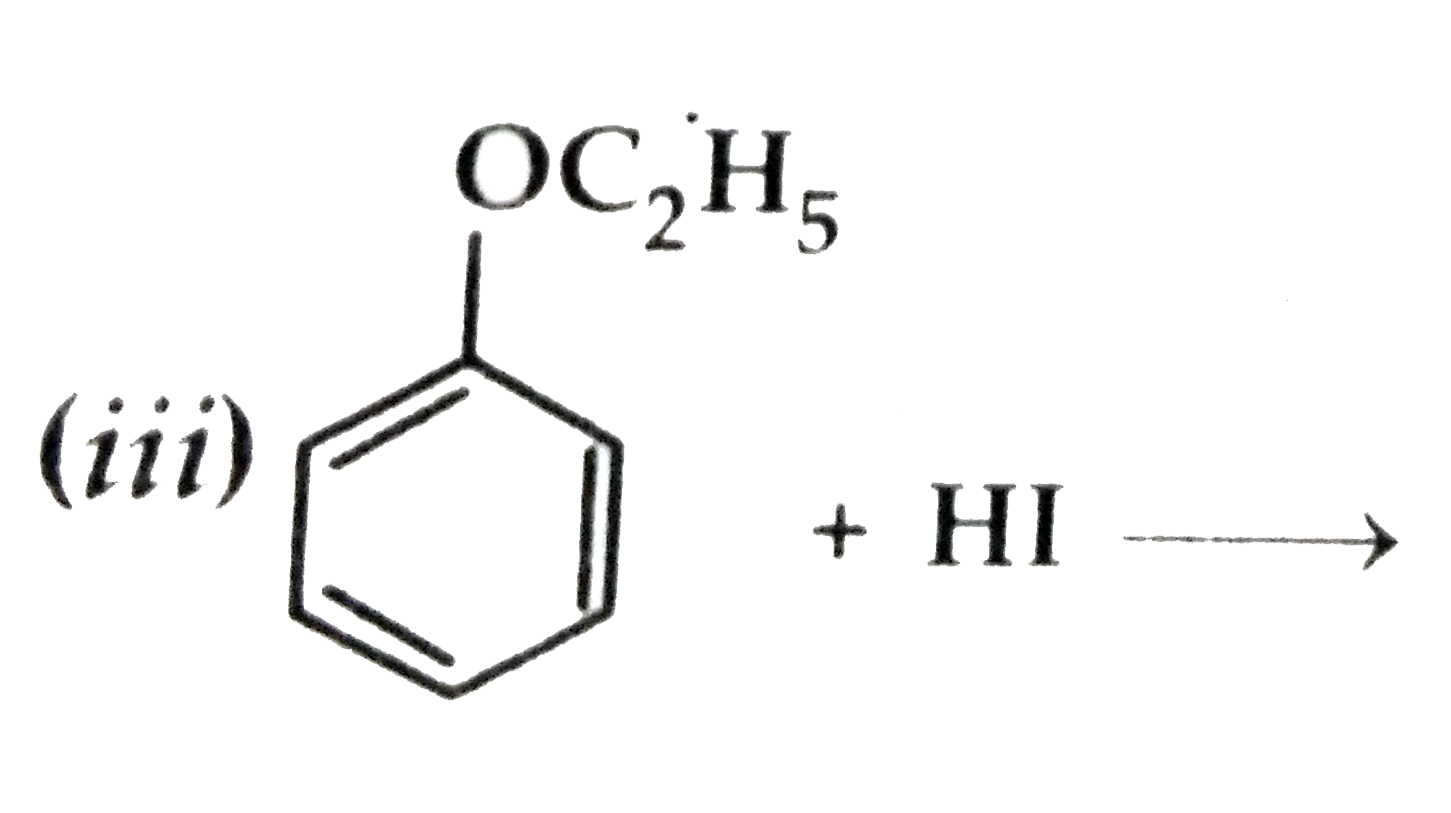
View Solution(a) Why is bithional added to soap ?
(b) What is tincture of iodine ? Write its one use.
(c) Among the following , which one acts as a food preservative ?
Aspartame , Aspirin , Sodium Benzoate , Paracetamol
View SolutionDefine the following with an example of each :
(a) Polysaccharides
(b) Denatured protein
(c ) Essential amino acids
View Solution(a) Write the product when D-glucose reacts with conc. `HNO_(3)`.
(b) Amino acids shown amphoteric behaviour. Why ?
(c ) Write one difference between `alpha`-helix and `beta`-pleated structures of proteins.
View Solution(a) Write the formula of the following coordination compound : Iron (III) hexacyanoferrate (II)
(b) What type of isomerism is exhibited by the complex `[Co(NH_(3))_(5)Cl]SO_(4)`?
(c) Write the hybridisation and number of unpaired electrons in the complex `[CoF_(6)]^(3-)`.
(Atomic No. of Co = 27)
View SolutionShyam went to a grocery shop to purchase some food items . The shopkeeper packed all the items in polythene bags and gave them to Shyam . But Shyam refused to accept the polythene bags and asked the shopkeepers to pack the items in papar bags . He informed the shopkeeper about the heavy penalty imposed by the government for using polythene bags . The shopkeeper promised that he would use paper bags in future in place of polythene bags.
Answer the following :
(a) Write the values (at least two) shown by Shyam .
(b) Write one structural difference between low-density polythene and high-density polythene .
(c) Why did Shyam refuse to accept the items in polythene bags ?
(d) What is a biodegradable polymer ? Give an example .
View Solution(a) Give reasons :
(i) `H_(3)PO_(3)` undergoes disproportionation reaction but `H_(3)PO_(4)` does not .
(ii) When `Cl_(2)` reacts with excess of `F_(2), ClF_(3)` is formed and not `FCl_(3)`.
(iii) Dioxygen is a gas while Sulphur is a solid at room temperature .
(b) Draw the structure of the following :
(i) `XeF_(4) " " (ii) HClO_(3)`
View Solution(a) When concentrated sulphuric acid was added to an unknown salt present in a test tube a brown gas (A) was evolved . This gas intensified when copper turnings were added to this test tube . On cooling, the gas (A) changed into a colourless solid (B) .
(i) Identify (A) and (B).
(ii) Write the structures of (A) and (B).
(iii) Why does gas (A) change to solid on cooling ?
(b) Arrange the following in the decreasing order of their reducing character :
HF , HCl , HBr , HI
(c) Complete the following reaction :
`XeF_(4) + SbF_(5) to `
View Solution(a) Write the cell reaction and calculate the e.m.f. of the following cell at 298 K :
Sn(s) `|Sn^(2+) (0.004M)||H^(+) (0.020M) |H_(2)(g)` (1 bar )| Pt(s)
(Given `E_(Sn^(2+)//Sn)^(@) = -0.14V`).
(b) Give reasons :
(i) On the basis of `E^(@)` values , `O_(2)` gas should be liberated at anode but `Cl_(2)` gas which is liberated in the electrolysis of aqueous NaCl.
(ii) Conductivity of `CH_(3)COOH` decreases on dilution .
View Solution(a)For the reaction :
`2AgCl (s) + H_(2)(g) ` (1 atm) ` to 2 Ag(s) + 2H^(+) (0.1M) + 2Cl^(-) (0.1M) , DeltaG^(@) = -43600J` at `25^(@)`C.
Calculate the e.m.f. of the cell . [log `10^(-n) = -n`].
(b) Define fuel cell and write its two advantages.
View Solution(a) Write the reactions involved in the following :
(i) Hofmann bromamide degradation reaction.
(ii) Diazotisation .
(iii) Gabriel phthalimide synthesis
(b) Give reasons :
(i) `(CH_(3))_(2)NH` is more basic than `(CH_(3))_(3)N` in an aqueous solution.
(ii) Aromatic diazonium salts are more stable than aliphatic diazonium salts .
View Solution(a) Write the structures of the main products of the following reactions :
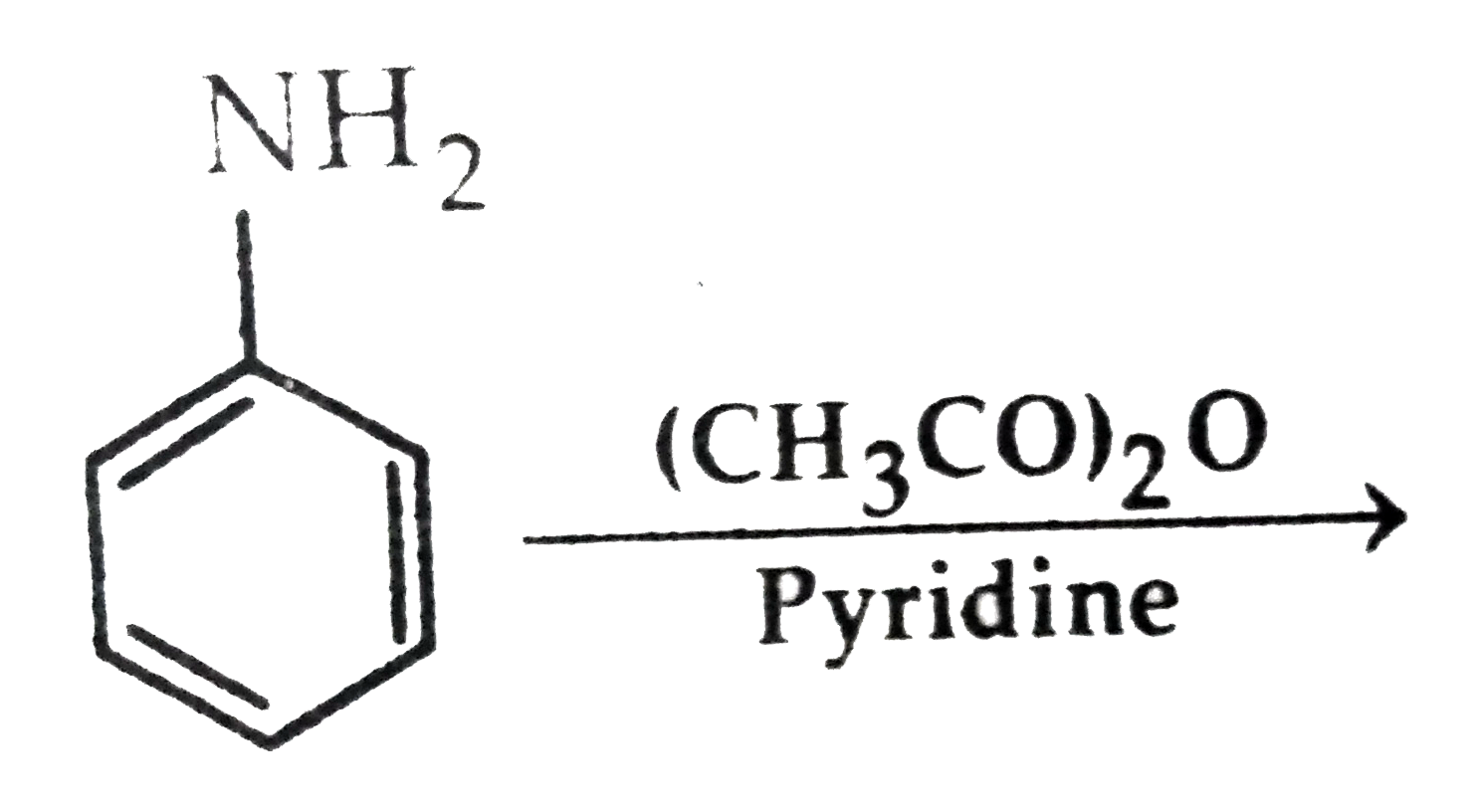
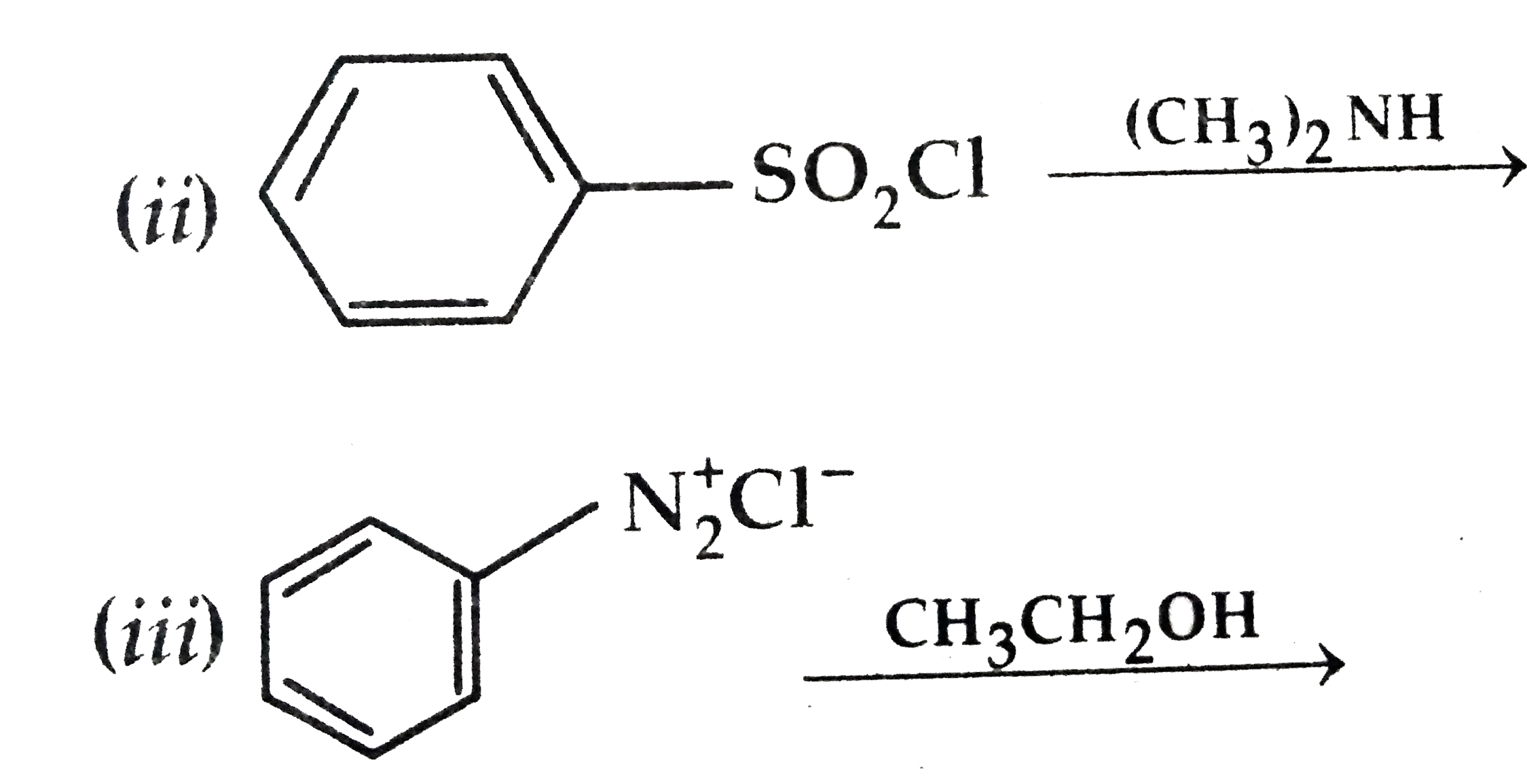
(b) Give a simple chemical test to distinguish between Aniline and N, N-dimethylaniline.
(c) Arrange the following in the increasing order of their `pK_(b)` values :
`C_(6)H_(5)NH_(2) , C_(2)H_(5)NH_(2), C_(6)H_(5)NHCH_(3)`
View Solution
Questions questions and complete solutions for chapter XII BOARDS of XII BOARDS PREVIOUS YEAR of Class 12
All Exercises from XII BOARDS PREVIOUS YEAR Class 12 CHEMISTRY XII BOARDS
- C.B.S.E CLASS XII
- C.B.S.E CLASS XII
- C.B.S.E. CLASS - XII
- C.B.S.E. CLASS - XII
- C.B.S.E. CLASS-XII
- C.B.S.E. CLASS-XII
- CHEMISTRY (THEORY)
- CHEMISTRY (THEORY)
- CHEMISTRY (Theory) [SET - I]
- CHEMISTRY (Theory) [SET - I]
- Delhi Board : Set - II
- Delhi Board : Set - II
- Delhi Board : Set - III
- Delhi Board : Set - III
- DELHI BOARD SET II
- DELHI BOARD SET II
- General Instrucations
- General Instrucations
- IMPORTANT QUESTIONS FOR PRACTICE CHEMISTRY (THEORY-XII) UNSOLVED)
- IMPORTANT QUESTIONS FOR PRACTICE CHEMISTRY (THEORY-XII) UNSOLVED)
- OUTSIDE DELHI (SET-I)
- OUTSIDE DELHI (SET-I)
- Outside Delhi : SET-I
- Outside Delhi : SET-I
- Outside Delhi : SET-II
- Outside Delhi : SET-II
- Outside Delhi : SET-III
- Outside Delhi : SET-III
- Outside Delhi : SET-II
- Outside Delhi : SET-II
- Outside Delhi : SET-III
- Outside Delhi : SET-III
- Outside Delhi Board: Set-III
- Outside Delhi Board: Set-III
- Outside Delhi: Set-II
- Outside Delhi: Set-II
- QUESTION PAPER (SECTION-A)
- QUESTION PAPER (SECTION-A)
- QUESTION PAPER (SECTION-B)
- QUESTION PAPER (SECTION-B)
- QUESTION PAPER (SECTION-C)
- QUESTION PAPER (SECTION-C)
- Questions
- Questions
- SECTION-A
- SECTION-A
- SECTION-B
- SECTION-B
- SECTION-C
- SECTION-C
- SECTION-D
- SECTION-D
- Set - 1 Comptt.
- Set - 1 Comptt.
- SET - II
- SET - II
- Set -I
- Set -I
- Set -II
- Set -II
- Set -III
- Set -III
- Set I
- Set I
- Set II
- Set II
- Set III
- Set III
- SET- I
- SET- I
- SET- II
- SET- II
- SET- III
- SET- III
- SET-1
- SET-1
- SET-I
- SET-I
- SET-II
- SET-II
- SET-III
- SET-III
- [OUTSIDE DELHI : SET - III]
- [OUTSIDE DELHI : SET - III]
- [OUTSIDE DELHI : SET - II]
- [OUTSIDE DELHI : SET - II]
- [OUTSIDE DELHI : SET -III]
- [OUTSIDE DELHI : SET -III]
- [OUTSIDE DELHI : SET -II]
- [OUTSIDE DELHI : SET -II]
- [SET-1]
- [SET-1]
- [SET-III]
- [SET-III]
- [SET-II]
- [SET-II]
- [SET-I]
- [SET-I]